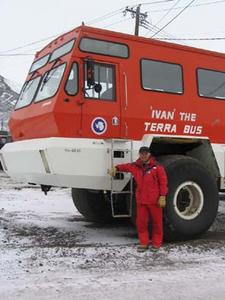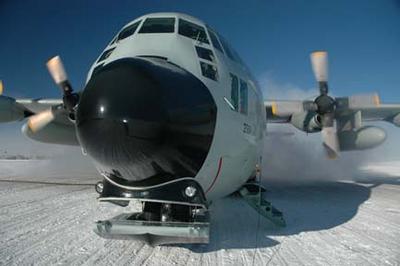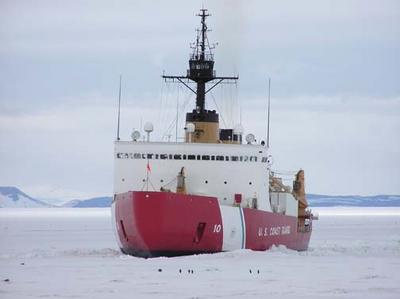1 November, 2004
Although I am a teacher, I don't teach school at McMurdo Station
(we call it MacTown around here) because there are no schools or kids
here. Everyone here is either a scientist or, like me, they work to
support scientists. There are lots of science research projects
underway and many countries operate research stations in other parts
of Antarctica. Some scientists are studying penguins, some are
studying seals, some are studying glaciers, some are studying the
earth's ozone layer high in the sky, some are studying really strange
stuff like neutrinos and muons, and well, other scientists are
studying many, many more things!
There are about 160 scientists and research assistants
working at MacTown. Another 790 people work in support jobs, like
me. My job is to provide transportation to the scientists and
support staff who live and work here. That means I drive different
types of machines to transport people around our small town. Below
is a picture of me standing beside one of the machines I drive. It
is called "Ivan the Terra Bus" and it is huge! I have to climb a
ladder to get inside. Once I get inside and start the engine, I can
open a door on the other side and lower a stairway so that my
passengers can enter easily. I can transport about 50 people in Ivan
between MacTown and the Ice Runway, where airplanes land with
supplies.
The Ice Runway is really cool...it floats on the Ross Sea!
The ice is about 6-12 feet thick and usually has some snow on top of
it. Where the wind has blown the snow away, it is a beautiful powder
blue color. Below the ice there is 600 feet of water! Below is a
picture of one of the LC-130 airplanes used to fly cargo to field
camps where scientists are working at field camps, far away from
MacTown. Notice that it has both skis and wheels. It can land on
the hard surface of the Ice Runway at McMurdo with wheels, but on the
soft snow at the South Pole and at the remote field camps, it can use
the skis!
Another airplane used in Antarctica is called a Twin Otter, and there
are four of these stationed at MacTown. Twin Otters fly scientists
to remote places. It can also carry scientific instruments that
"look" at Antarctica to gather information on all kinds of things
like ice sheet thickness and magnetism. We also have helicopters in
McMurdo and they are very busy this time of year hauling equipment
and scientists to field camps, weather stations and other places
where airplanes cannot land.
Most of the research happens during the Antarctic summer,
from October to February. It is winter in the northern hemisphere at
this time, but it is summer down here. The sun never sets during
the summer here - there are 24-hours of sunshine! During the summer,
the temperatures are much warmer and MacTown is a very busy place
with helicopters, small planes, and big planes taking off and landing
all the time. In January, a supply ship will arrive in MacTown if
the icebreakers can make a path through the ice. See the picture of
an icebreaker that came last year that my co-worker CJ Tuepker took.
Notice the Adelie penguins approaching the ship; they are such
curious creatures! I hope to see this ship for myself in January.

1. John and Ivan the Terra Bus

2. Passengers boarding Ivan

3. LC-130 cargo plane on the Ice Runway

4. Closeup of LC-130 skis for landing on snow

5. Twin Otter takeoff from the Ice Runway

6. Helicopter hauling cargo to a remote field camp

7. Icebreaker at McMurdo Station; notice the Adelie penguins at the bow of the icebreaker
Contact the TEA in the field at
.
If you cannot connect through your browser, copy the
TEA's e-mail address in the "To:" line of
your favorite e-mail package.
|
